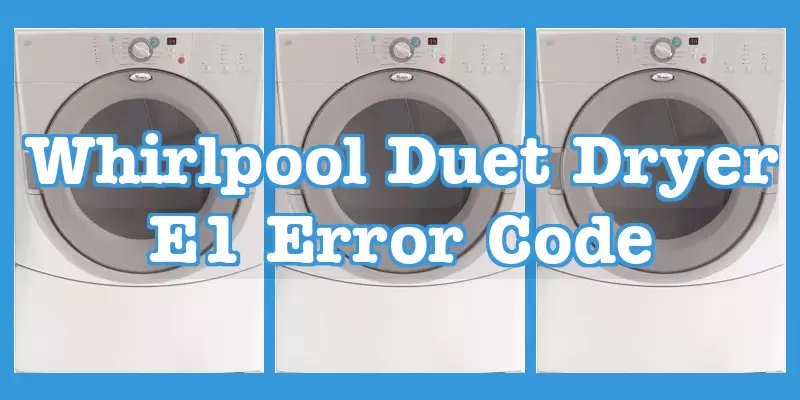
In simple terms, the E1 error code indicates a temperature-related issue within your dryer. Think of it like your dryer throwing up a little flag saying, “Something’s up with the heat!” This code usually pops up when there’s a problem with how the dryer is measuring or controlling its internal temperature. The good news? Many of the causes behind this error are quite fixable, and we’ll guide you through understanding and addressing them.
Understanding the Temperature Sensor Issue
To get to the bottom of the E1 error, we need to talk about the temperature sensor, also known as the thermistor. Imagine this component as the “thermometer” of your dryer. It keeps track of the heat levels inside and ensures everything stays within a safe range. If this sensor malfunctions, the dryer can’t accurately measure the temperature, leading to the E1 error code.
Here’s the deal: a faulty thermistor can be due to various reasons. It could be as simple as a connection issue where the wires aren’t snugly attached, or it might involve wear and tear over time. Think of it like a toy that’s got a loose battery—no power, no play! In some cases, the thermistor might be so worn out that it just can’t do its job anymore. You might be wondering if there’s any way to check this yourself. There is! If you’re comfortable, you can use a multimeter to test the resistance of the thermistor. It should have a specific reading, usually around 10k ohms at room temperature. If not, it may need replacing.
What’s next? If you suspect the thermistor is the culprit, it’s a wise move to consult the user manual or reach out to a professional. Replacing a thermistor isn’t overly complex, but if DIY isn’t your style, professional help ensures the problem gets fixed without a hitch. As a preventative tip, ensure your dryer is kept clean and free of lint buildup, as excessive lint can impact how well components like the thermistor function.
Exploring Airflow Issues
Another common cause of the E1 error code is poor airflow within the dryer. Picture this: your dryer needs to “breathe” to do its job correctly, just like you’d need a clear nose to run a marathon! If the airflow is blocked, it can cause the dryer to overheat and trigger the E1 code.
So, what causes poor airflow? It can often stem from a clogged lint trap, a blocked exhaust vent, or even a restriction in the internal ducts of the dryer. Just like how clogged pipes lead to plumbing issues, blocked airflow in a dryer leads to temperature problems. When air can’t circulate properly, heat builds up, and the temperature sensor throws up the E1 error to alert you of the potential danger.
The good news is that ensuring proper airflow is something you can tackle as part of regular maintenance. Make a habit of cleaning the lint trap after every use and checking the exhaust vent periodically. If you notice that your clothes are taking longer to dry, that’s a telltale sign that airflow might be the issue. As a great next step, consider scheduling annual dryer vent cleanings with a professional to prevent future airflow restrictions.
Checking the Dryer’s Heating Element
Sometimes, the E1 error stems from an issue with the heating element itself. Imagine the heating element as the “stove” inside your dryer—it’s responsible for generating the heat needed to dry your clothes. If it fails, your dryer’s ability to maintain the correct temperature is compromised, which can lead to the E1 error code popping up.
What can go wrong with the heating element? Over time, it might burn out or develop breaks in the coil, preventing it from heating efficiently. It’s akin to a campfire with damp wood; even though you try to light it, it just won’t catch fire. In some cases, the element might even short out, causing the dryer to overheat. To diagnose this, you’ll want to inspect the heating element for visible damage or use a multimeter to check for continuity.
If you find the heating element is indeed the issue, replacing it is usually the best course of action. While this might sound daunting, many dryer models have accessible heating elements that can be swapped out with relative ease if you’re handy with tools. However, for those not comfortable with this, calling in a professional is always a safe bet. Remember, keeping your dryer’s internal components clean and well-maintained can extend the life of the heating element and minimize the chances of encountering an E1 error.
In conclusion, while the E1 error code can be a bit of a headache, understanding its causes can give you the confidence to tackle the problem head-on. Remember, regular maintenance and a bit of troubleshooting can go a long way in keeping your Whirlpool dryer running smoothly. Happy drying!